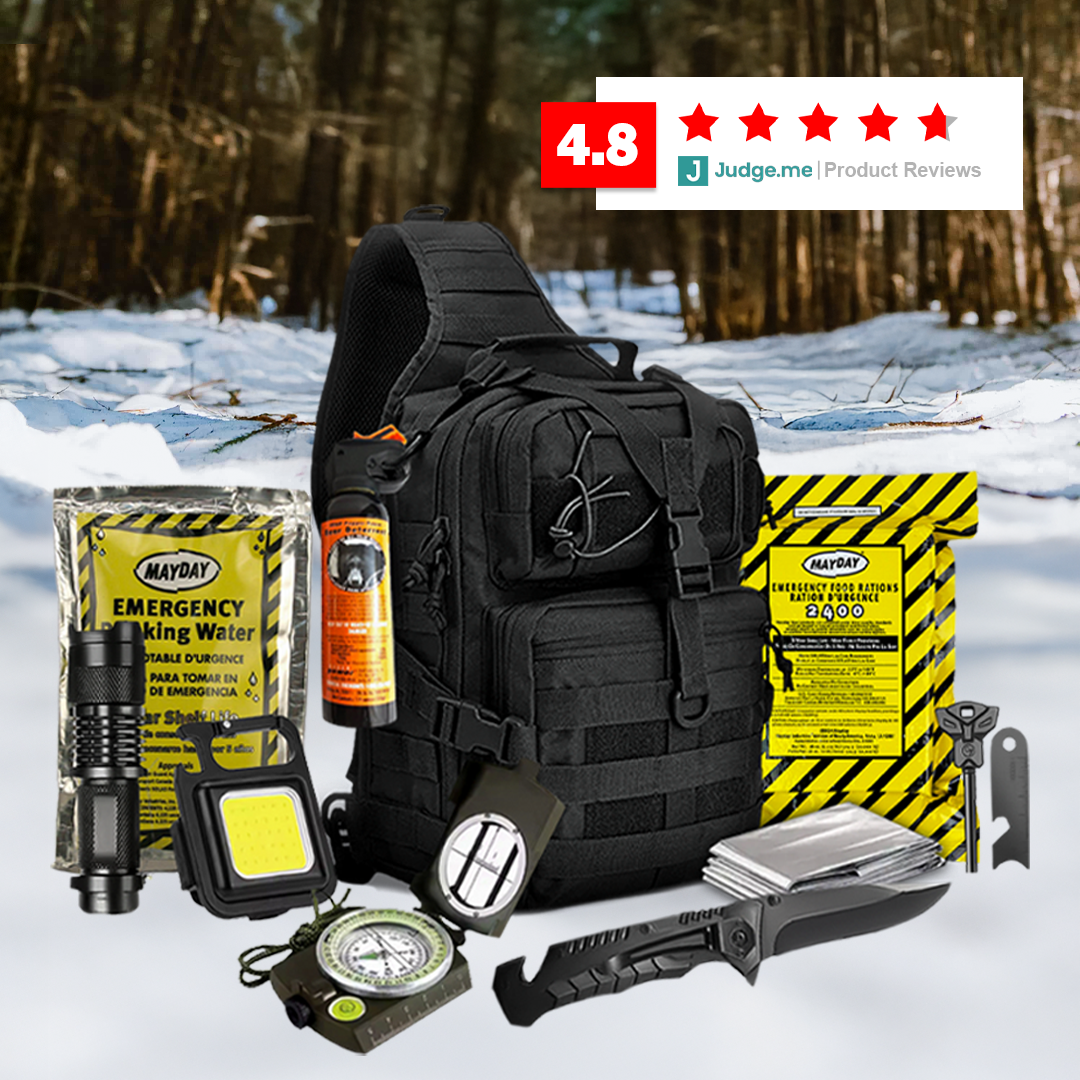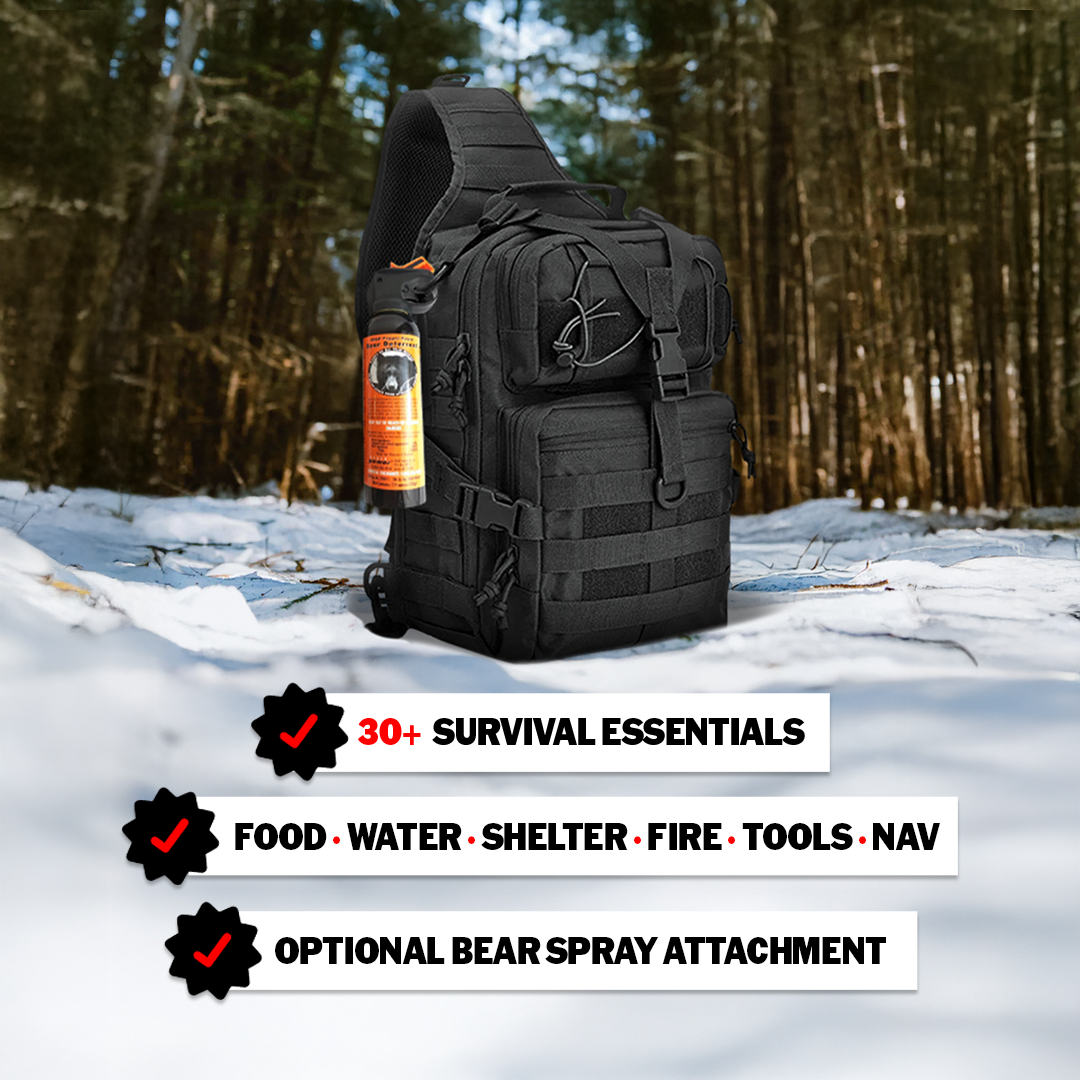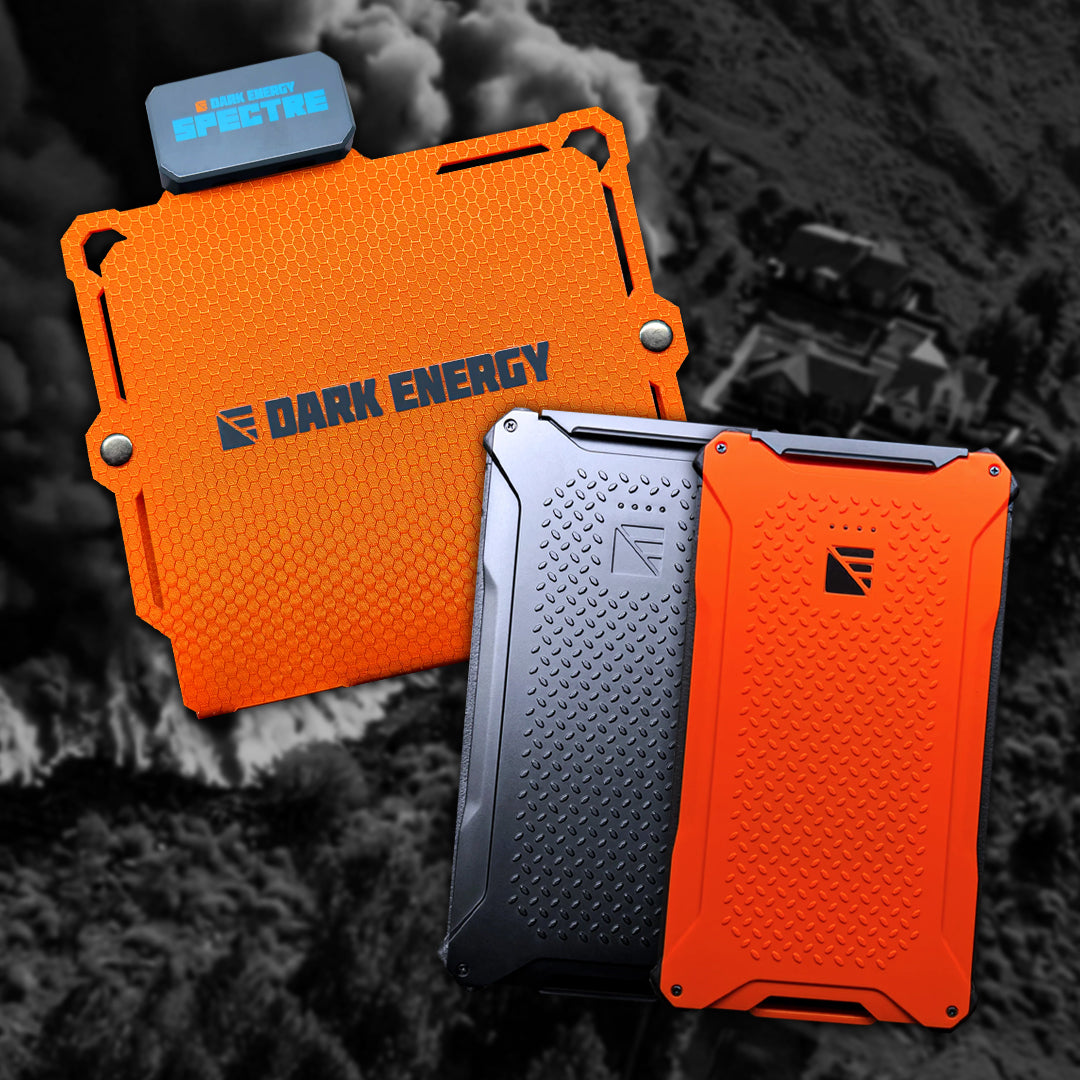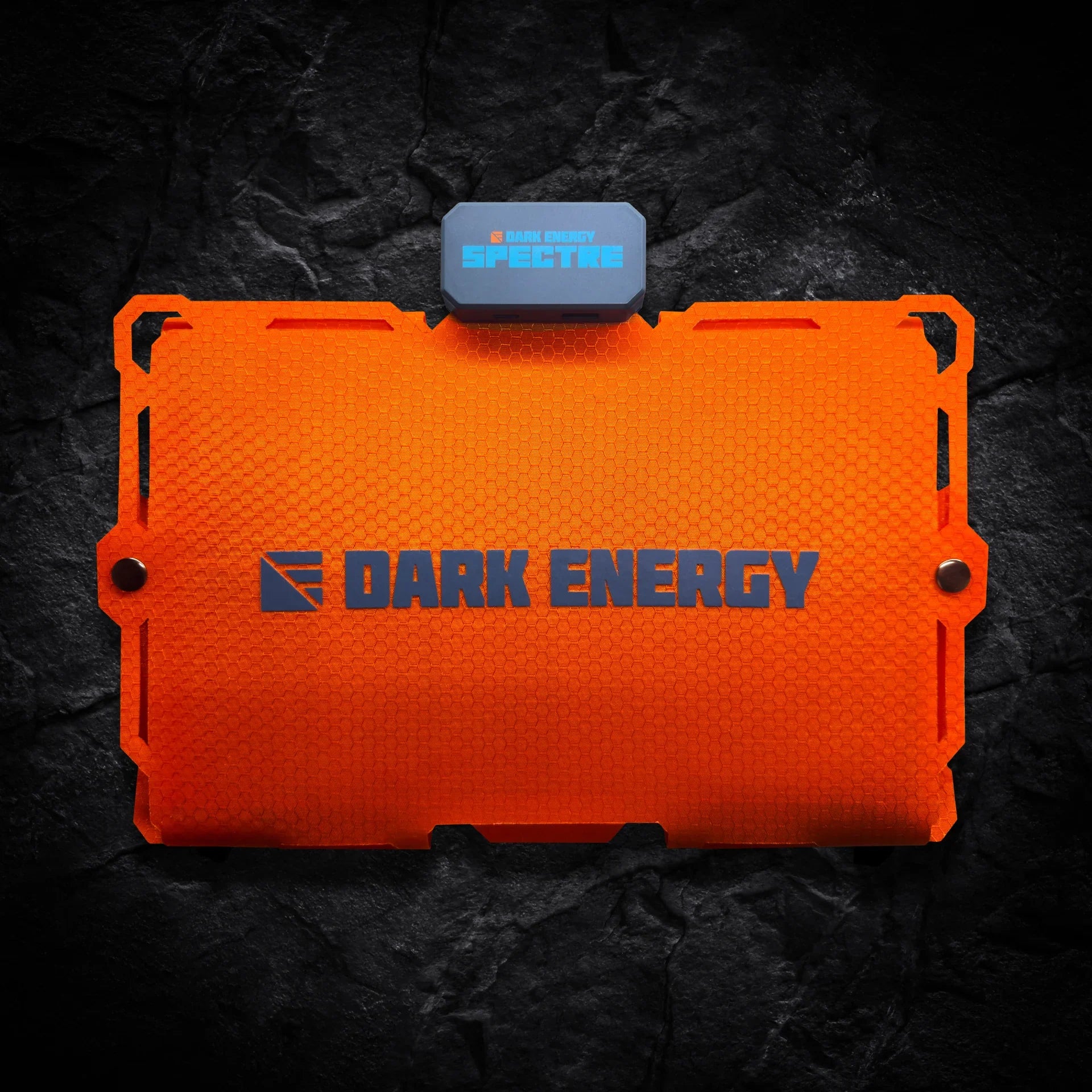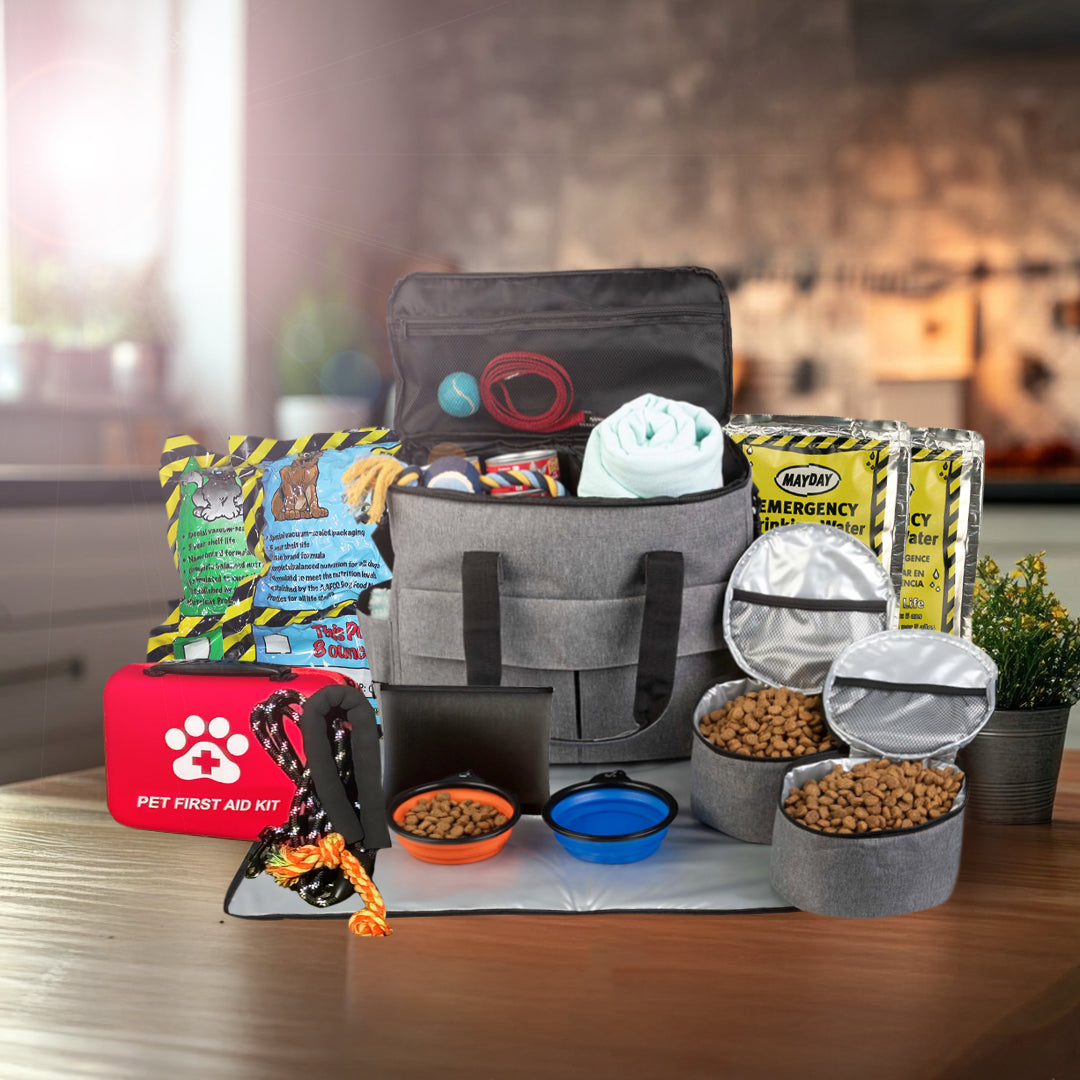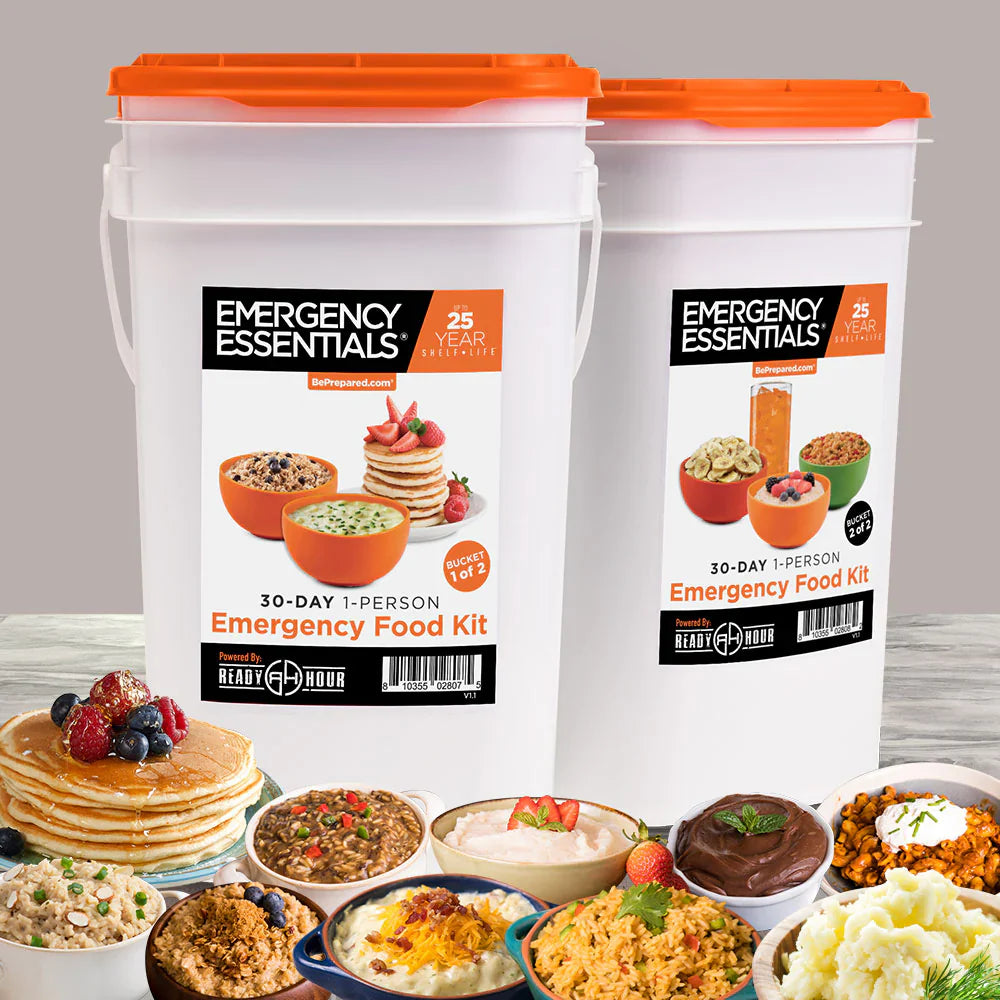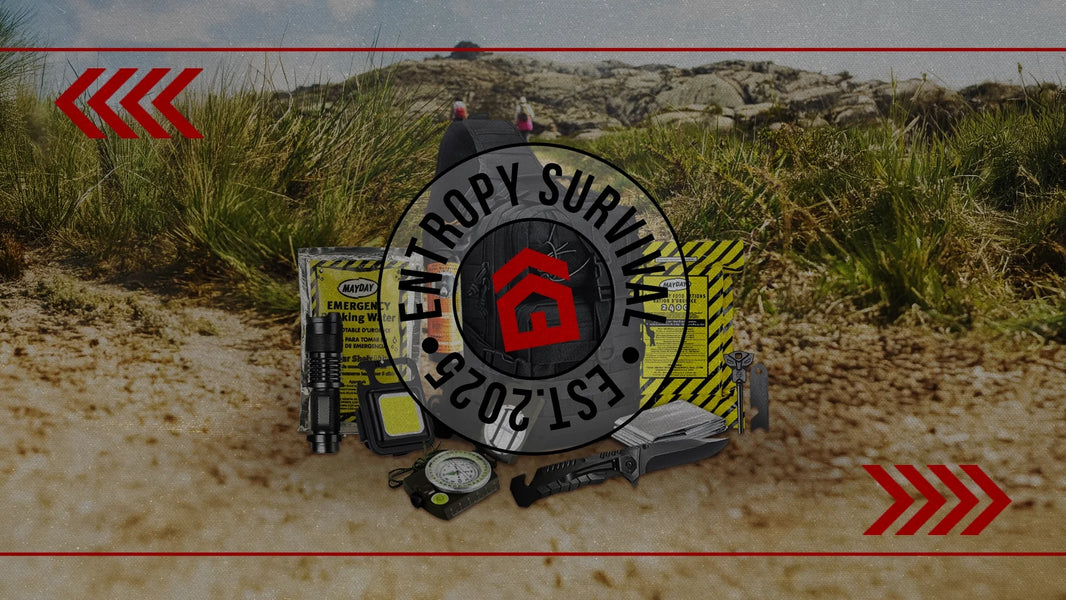When disaster strikes and cell networks fail, reliable communication becomes your lifeline. At Entropy Survival, we've seen how quickly modern communication infrastructure can collapse during emergencies, leaving families isolated and vulnerable. That's why we're passionate about helping you establish dependable backup communication systems—with General Mobile Radio Service (GMRS) radios standing as one of the most effective options for emergency preparedness.
Why GMRS Radios Matter for Survival Situations
In today's interconnected world, we take instant communication for granted. But what happens when a natural disaster knocks out cell towers? Or when power outages disable internet services? This is where GMRS radios prove invaluable, offering reliable communication when all other systems fail.
Our CEO, an Army Veteran with extensive field experience, often reminds us that "survival isn't just our business—it's our way of life." This philosophy extends especially to communication planning. When the chaos of an emergency situation unfolds (what physicists call "entropy"), having order in your communication systems can make the difference between safety and disaster.
GMRS radios provide that order through their reliability, impressive range, and simple operation. Unlike standard walkie-talkies or FRS (Family Radio Service) radios, GMRS systems can transmit over much greater distances—sometimes up to 50 miles with proper equipment and conditions—making them ideal for emergency scenarios where family members might be separated.
GMRS vs. Other Radio Options: Making the Right Choice
When selecting communication tools for your emergency kit, you'll encounter several options. Understanding the key differences can help you make the right choice for your family's safety.
GMRS vs. FRS Radios
FRS radios are the standard "walkie-talkies" you might pick up at a big box store. While they require no license and are easy to use, they're significantly limited:
-
FRS radios are restricted to a maximum of 2 watts of power, limiting their realistic range to about 1-2 miles in favorable conditions—and often much less in buildings, forests, or hilly terrain.
-
Many manufacturers claim longer ranges, but these are rarely achievable in real-world conditions.
GMRS radios, on the other hand, can transmit with up to 50 watts of power. Even handheld GMRS units typically operate at 5 watts, providing substantially better range than FRS radios. This means more reliable communication across neighborhoods, between vehicles, or in outdoor wilderness scenarios.
Even more importantly, GMRS allows the use of repeaters—fixed stations that receive your signal and retransmit it with greater power. This can dramatically extend your communication range, sometimes by dozens of miles. During widespread emergencies, this extended range becomes crucial for contacting emergency services or separated family members.
GMRS vs. Ham (Amateur) Radio
Ham radio offers the most capabilities and range of all consumer radio services—even allowing global communication under the right conditions. However, it comes with significant barriers:
-
Ham radio requires passing a technical exam, learning radio theory, and understanding complex operating procedures. While worthwhile for dedicated enthusiasts, it's often too high a barrier for families simply seeking reliable emergency communications.
GMRS strikes the perfect balance—offering much better performance than FRS radios without the learning curve of ham radio. No technical exam is required, just a simple application process and fee.
Do You Really Need a GMRS License?
The short answer is yes—if you want to legally operate a GMRS radio in the United States, you must obtain a license from the Federal Communications Commission (FCC).
Some radio sellers market "dual FRS/GMRS" radios that can operate on both services, suggesting you can use them without a license. However, using the GMRS frequencies or power levels without proper licensing is illegal and can result in significant fines. The FCC actively monitors radio frequencies and enforces these regulations.
Here at Entropy Survival, headquartered in Cody, Wyoming, we understand the importance of self-reliance. But we also know that proper licensing ensures radio frequencies remain organized and usable during emergencies when they're needed most.
The Benefits of Getting Licensed
Obtaining your GMRS license offers several significant advantages that make the process worthwhile:
Family Coverage
One of the most appealing aspects of a GMRS license is that it covers your entire immediate family under a single license. This includes:
-
Your spouse
-
Children
-
Parents
-
Siblings
-
Grandparents and grandchildren
-
Aunts, uncles, nieces, and nephews
-
In-laws
This family coverage makes GMRS extremely cost-effective compared to other licensed radio services where each operator needs their own license.
Extended Range and Power
Licensed GMRS operators can legally use higher-powered equipment (up to 50 watts) and external antennas that dramatically increase range. This means more reliable communication in diverse terrain and emergency conditions.
The ability to use mobile units in vehicles and base stations at home creates a comprehensive communication network that can function during extended emergencies.
Repeater Access
Perhaps the most valuable benefit of GMRS licensing is access to repeater networks. Repeaters are strategically placed radio stations that automatically receive and retransmit your signals, extending your effective range enormously.
In many areas, local GMRS clubs maintain repeater networks that can be invaluable during emergencies. Your license grants you legal access to these systems when you need them most.
Peace of Mind
There's immeasurable value in knowing you have legal, reliable communication capabilities when other systems fail. This peace of mind extends to your entire family's safety during emergencies.
Our customers often tell us that after water, food, and shelter, communication preparedness brings them the most security in their emergency planning.
How to Get Your GMRS License: A Simple Process
Contrary to what many believe, obtaining a GMRS license is straightforward. Unlike ham radio, there's no exam to pass—just an application process and fee. Here's how to do it:
Step 1: Obtain an FCC Registration Number (FRN)
Before applying for your license, you'll need to register with the FCC:
-
Visit the FCC Commission Registration System (CORES) at
https://apps.fcc.gov/cores/userLogin.do -
Click "Register" to create a new account
-
Follow the prompts to set up your username and password
-
Complete the registration form to receive your 10-digit FRN
This FRN will be used for all your future interactions with the FCC, so keep it in a secure location with your other important documents.
Step 2: Apply for Your GMRS License
With your FRN in hand, you're ready to apply:
-
Go to the FCC's Universal Licensing System at
https://www.fcc.gov/wireless/universal-licensing-system -
Click "File Online" under the "Filing" heading
-
Log in with your FRN and password
-
On the License Manager page, click "Apply for a New License" in the left navigation menu
-
From the dropdown menu, select "ZA - General Mobile Radio Service (GMRS)"
-
Click "Continue" to proceed with the application
-
Complete all required fields in the application form
-
Review your information carefully and click "Continue to Certify"
-
Sign the application electronically by typing your name
-
Click "Submit" to file your application
Step 3: Pay the License Fee
After submitting your application:
-
The system will calculate your fee (currently $35 for a 10-year license)
-
Follow the prompts to select your payment method (credit card, bank account, etc.)
-
Complete the payment process
-
Save your confirmation for your records
The FCC typically processes applications within a few business days. Once approved, your license is valid for 10 years, making it one of the most cost-effective investments in your emergency preparedness arsenal at just $3.50 per year.
Step 4: Access Your License
When your application is approved:
-
Log back into the ULS License Manager
-
Click "Download Electronic Authorizations" from the left navigation menu
-
Select your callsign and download your official license
-
Store a copy with your emergency documents and another with your radio equipment
Keep in mind that the FCC no longer mails paper licenses automatically. If you provide an email address on your application, they'll email you a copy of your license once it's granted.
Setting Up Your GMRS Communication System
Once licensed, you'll need appropriate equipment for your emergency communications plan. Here's what to consider:
Essential GMRS Equipment
Your GMRS radio setup should include:
-
Handheld Radios: Portable units for personal carry, typically offering 2–5 watts of power with a range of 2–5 miles under favorable conditions. Look for models with rechargeable batteries and alternative power options like standard AA batteries.
-
Mobile Radios: Vehicle-mounted units that offer higher power (typically 5–50 watts) and better antennas, providing significantly better range than handhelds. These are ideal for evacuation scenarios or when traveling in multiple vehicles.
-
Base Stations: Home-installed systems with the maximum allowed 50 watts of power and elevated antennas for optimal coverage. These serve as your family's communication hub during emergencies.
Our Safe House survival kit includes a versatile 3-in-1 radio that can be used for GMRS communications when paired with your license. This integration of communication tools with other survival essentials reflects our commitment to comprehensive preparedness.
Programming Your GMRS Channels
Your GMRS license gives you access to 30 channels:
-
22 standard channels shared with FRS radios
-
8 repeater channels for extended communication range
We recommend programming your radios with local repeater frequencies and establishing primary and secondary family channels in advance. Our AI-powered Survive All Guide includes customizable family communication plans that help you coordinate these details.
Building Your Family Emergency Communication Plan
Having the right equipment and licensing is only part of the equation. At Entropy Survival, we emphasize practical planning for real-world scenarios.
Establishing Communication Protocols
Create simple, clear protocols for your family to follow during emergencies:
-
Establish regular check-in times when family members should report their status during extended emergencies. Having a consistent schedule helps conserve battery power while ensuring everyone remains connected.
-
Develop a channel plan with primary and backup frequencies. Designate specific channels for different purposes—general family communication, emergency alerts, and neighborhood coordination.
-
Create simple, unambiguous communication codes that even younger family members can remember and use. These should cover common emergency scenarios and vital information needs.
-
Practice regular radio checks and emergency drills so everyone—including children—becomes comfortable with the equipment and procedures before they're needed in a crisis.
Integrating GMRS with Your Overall Emergency Plan
Your communication strategy should work seamlessly with your larger emergency preparedness plan:
-
Keep portable radios with your bug-out bags, ensuring they're always charged and ready for immediate evacuation scenarios. The compact design of modern GMRS handhelds makes them easy to include in even space-limited kits.
-
Store base station equipment with backup power options like solar chargers or generators. Communication becomes even more critical during extended power outages.
-
Develop relationships with local GMRS users and communities who might become valuable resources during widespread emergencies. Many areas have active GMRS networks that coordinate during disasters.
-
Document frequencies, codes, and procedures in waterproof format with your emergency documents. Our weatherproof documentation materials included in the 164-item first aid kit are perfect for this purpose.
Frequently Asked Questions About GMRS Licensing
How much does a GMRS license cost?
The current fee is $35 for a 10-year license. This breaks down to just $3.50 per year for your entire family's communication capabilities—an exceptional value for emergency preparedness.
Does every family member need their own license?
No, one of the greatest advantages of GMRS is that a single license covers the licensee and all immediate family members, including spouses, children, parents, siblings, and in-laws.
Is there a test required for GMRS licensing?
Unlike amateur (ham) radio, GMRS requires no technical examination. You simply complete the application process and pay the fee.
How long does it take to get approved?
The FCC typically processes applications within 2–10 business days, though it may take longer during busy periods.
Can I use my GMRS radio internationally?
GMRS licensing and frequencies are specific to the United States. Different countries have their own regulations and systems for personal radio services. Always research local requirements before traveling.
What's the actual range of GMRS radios?
While manufacturers often claim ranges of 20+ miles for handheld units, realistic expectations are:
-
1–5 miles for handhelds in varied terrain
-
5–15 miles for mobile units
-
25+ miles when using repeaters under favorable conditions
Final Thoughts: Communication Security Through Preparation
At Entropy Survival, we believe that emergency preparedness isn't about fear—it's about bringing order to potential chaos. Nowhere is this more evident than in communication planning, where a modest investment in equipment and licensing creates a reliable safety net for your family.
Our headquarters in Cody, Wyoming positions us near Yellowstone National Park, where we're intimately familiar with the challenges of maintaining communications in remote areas and harsh conditions. This experience informs everything we do, from product development to educational content like this guide.
The $35 investment in a 10-year GMRS license represents one of the most cost-effective components of a comprehensive emergency preparation strategy. Combined with appropriate equipment and planning, it provides communication resilience that could prove invaluable during crisis situations.
Don't wait until disaster strikes to establish your emergency communication capabilities. The time to secure your GMRS license and build your family's communication plan is now—before you need it.
This guide was created by the emergency preparedness experts at Entropy Survival, LLC.
Make sure to check out more articles in our News & Views section. Feel free to reach out any time to see how Entropy Survival can help you prepare you and your family for any disaster or survival scenario.




